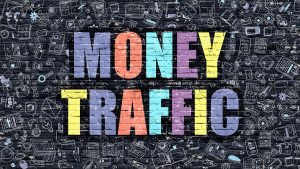Money for Nothing: Paying for Bot Traffic and Its Effect on Advertising Sales

In online media, the money comes from advertising and the advertising comes from website traffic.

Since there are billions to be made in digital marketing, traffic is a hot commodity. In the dot-com spirit of making something from nothing, traffic vendors generate and sell a massive amount of bot traffic, often at great personal profit. As a result, online platforms are saturated with dead leads.
According to Wikipedia, An internet bot which is also referred to as a web robot is basically a software designed to execute automated and repeated tasks and scripts over the internet. Bots are used by some digital marketing companies to deliver hundreds of thousands of traffic to your website by the switch of a button. The reality is that bots are being used to deliver non-human traffic which gives your website a very high bounce rate and no real conversions.

Even well established companies whose marketing departments are filled with the best in the field have trouble reaching real people online. In 2013, for example, Heineken’s marketing department was shocked to find that only 20% of the company’s paid digital advertisements reached actual humans. The company had spent millions of dollars pitching their product to bots [1].
A 2015 study found that bot traffic makes up a significant portion of every site’s total traffic, although the percentage is lower for most popular sites. On average, 85% of traffic to sites with between 10 and 1,000 daily visits comes from bots. The number drops to 40% for sites with 100,000 or more daily views [2]. Still, 40% is not an insignificant percentage.
Unsolicited bot traffic originates from both beneficial and malicious sources. “Good” bots crawl website content, gathering information for search engines and other organizations. “Bad” bots are auto refresh algorithms that don’t do anything but consume bandwidth and slow down the website. These bots are sometimes used to launch attacks that cripple competing websites.
Traffic generators sell both human and “bad” bot traffic to websites even though the bot traffic is, essentially, worthless. Cheap traffic generators like Auto Traffic Generator, One Million Clicks, Traffic Magnet, and Traffic Programmer use bots to generate traffic on a customer’s website [3].

Although this increases the site’s pageviews, it also eats up its bandwidth. In addition, most advertisers and advertising agencies like AdSense and Commission Junction frowns upon bots traffic. In fact, your site can be eliminated from their ad-serving programs if caught sending bot traffic.
“Bad” bot traffic is neither an ethical nor, these days, effective way to increase a site’s pageviews. If the website sells advertising based on pageviews alone (not referrals or commissions), using a cheap traffic generator is a way to increase the site’s advertising revenue. Since the early 2010s, however, quality advertisements are often embedded with code that can detect bots, so a high volume of bot traffic will alienate advertisers in the long run.
A 2014 inquiry by Chrysler into one of its advertising platforms – the food and travel lifestyle site Saveur.tv – allegedly discovered that 98% of Saveur.tv’s traffic came from bots.Chrysler immediately withdrew its advertising from the site and accused it of conducting “fraudulent activity.” As Bloomberg put it in their 2015 exposé on bot traffic, “Some companies pay for it intentionally, some accidentally, and some prefer not to ask where their traffic comes from” [1].

Sketchy traffic generators sometimes deliver bitter surprises to websites that did not realize they were purchasing bot traffic.
These generators go through numerous reboots and name changes and sometimes disappear suddenly with their customer’s service payments (which can range from $5 to $250 per package of traffic) [3].
Since these generators sell something morally ambiguous to begin with, they do not always adhere to professional standards of business conduct.

where servers are used to run these bot traffic
If you’re new to websites, try not to fall into the trap of paying for worthless traffic. Although legitimate traffic generators do exist (see our digital advertising guide), they aren’t cheap. One of the greatest misconceptions of the internet age is that the internet is a place where one can make something from nothing. While –for traffic generators that use bots, for example – this is sometimes true, sustainable and legal online enterprises require honest, hard work.

In summary, your best bet to driving real human traffic to your new or existing website is developing a SEO strategy for organic search and ranking. Next, link your site to trusted and reliable sites. And finally, consider a fan page on Facebook, Twitter and Pinterest just to name a few. And yes, you should consistently update your blog with well researched postings that are helpful to your audience.
Call us at EvdodepotUSA to find the best internet package for your online needs 1-866-439-6630.
1] http://www.bloomberg.com/features/2015-click-fraud/
[2] http://www.emarketer.com/Article/Humans-Surpass-Bots-Website-Traffic/1013398
[3] http://growtraffic.com/blog/2015/01/top-10-traffic-generator-applications-web





